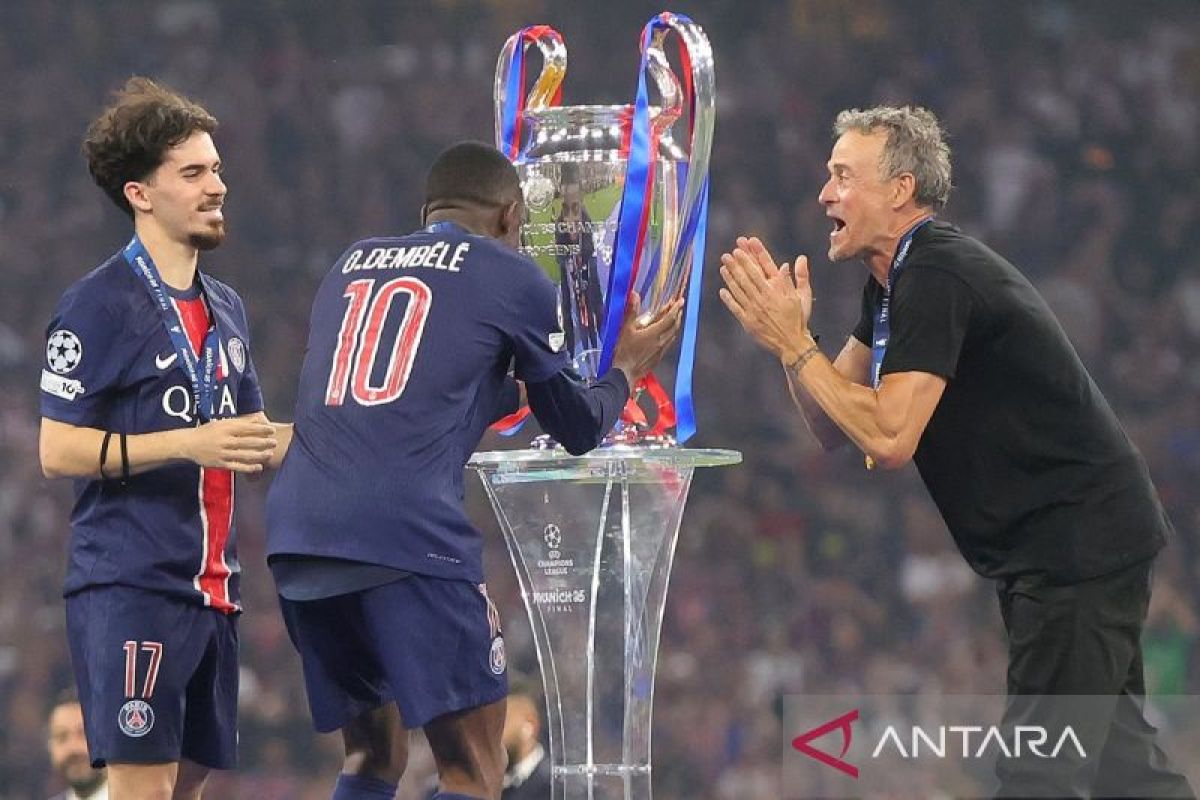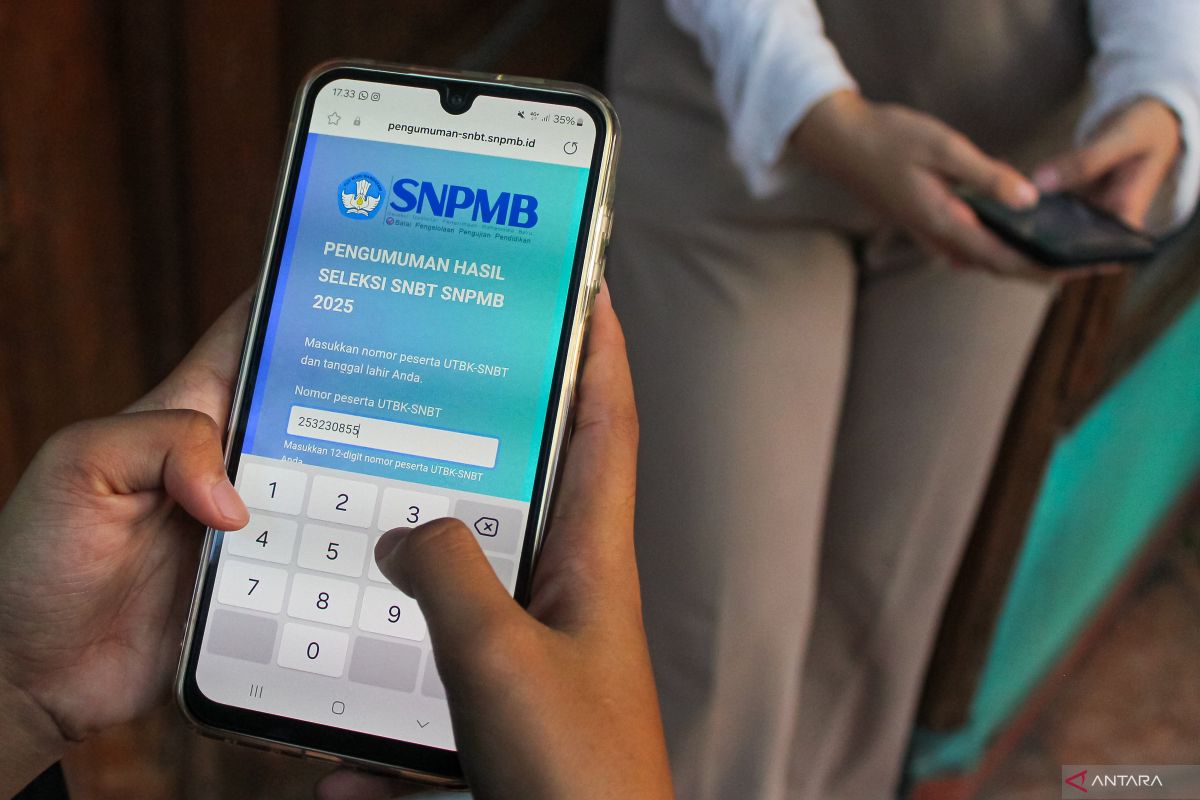Ever wanted to hit a baseline winner like reigning Wimbledon champion Carlos Alcaraz or fire shots into the bottom corner like Erling Haaland? If only you knew the secret to their success. Well, now you just might.
Such is the pursuit of sporting perfection, athletes are forever looking for ways to find the edge, which is why we forever see stars pledge their allegiance to the latest invention, contraption and craze guaranteed to take their game to the next level.
It soon becomes difficult to tell the difference between gimmick or gamechanger and whether it's just the latest fad or has the power to produce miracles.
Mail Sport delves into the strangest sporting trends to find out which are the real deal, which are just for show and which could help YOU.
Pickle juice
Carlos Alcaraz and Jannik Sinner both sipped sachets of the stuff in their French Open final five-set thriller. It was the secret 'magic potion' that helped fire England to the Euro 2024 final.
The belief shared by pickle juice's disciples is that this sour, briny, truly disgusting liquid cures cramp like nothing else. One reason, they say, is that the sodium and potassium in it replenishes the electrolytes lost by sweat. But so does Lucozade Sport and that doesn't taste like the remnants of your grandad's old onion jar.
Such is the pursuit of sporting perfection, athletes - like Carlos Alcaraz - are forever looking for ways to find the edge
Sour, briny, truly disgusting pickle juice liquid is said to cure cramp like nothing else
Some say drink it. Some say you shouldn't drink it but instead swill it around your mouth for 30 seconds then spit it out
The pickle juice's rancid taste, however, is what apparently makes it work so well. Research back in 2010 claimed it was that face-scrunching acidity that fires signals to your brain that make your muscles instantly relax. It said it reduced cramps by around 30 per cent.
'The sports nutrition industry jumped on this and launched a series of products, which garnered attention because its novel and unfamiliar,' Matt Jones, a sports nutritionist who previously worked with Brentford, Chelsea Women and West Ham and is now head of nutrition at the UAE FA, tells Mail Sport.
Some say drink it. Some say you shouldn't drink it but instead swill it around your mouth for 30 seconds then spit it out. Others even advocate putting chillis in it to make it worse as, in the words of sports nutrition professor at Sheffield Hallam University Mayur Rachordas, 'the more horrible the horrible the taste, the more effective it is.'
Many experts, though, are still unconvinced.
'The evidence remains unclear,' adds Jones. 'The cause of exercise-induced muscle cramps remains one of the great unknowns. The general consensus is that all cramps are unique and given the number of factors that might cause them – dehydration, sodium loss, heat and humidity, lack of fitness, muscle fatigue, nerves, possible psychological factors (you rarely see muscle cramps during unimportant friendlies but more so in bigger games under greater pressure) – it's impossible to say these high-profile athletes avoid cramp because of pickle juice alone.
'More recent research has suggested there's no difference between pickle juice and water on helping cramps.
'I've used it with mixed results. Some experience some short-term relief, some just gag and the cramp continues! With things like pickle juice – and most things within sports nutrition – there is likely a big placebo at play too, which experienced applied sports nutritionists can cleverly use to their advantage!
'The most important considerations in preventing cramps is fitness, freshness, hydration and diet – athletes will have most, if not all, of these bases covered.'
'It's impossible to say these high-profile athletes avoid cramp because of pickle juice alone, sports nutritionist Matt Jones says
That hasn't stopped athletes downing the stuff, though - and is was billed the 'magic potion' that helped England to the final of Euro 2024
The average park runner might not, though. So give it a try if you wish. It works for some. Hold your nose if you do, though. It's rank.
Jones suggests using electrolyte sachets instead to get your levels back up. I'll just stick to Lucozade.
THE LOWDOWN
Where to buy: Pickle Juice bottles on Amazon
How much is it: £68 for pack of 24
Consumer rating: 3/5 – it could help with your cramps but electrolyte tablets or energy drinks will work just as well – and taste much nicer!
Blue-light glasses
Erling Haaland and Jack Grealish were on their way back from a Manchester City game when they decided to take a picture for social media. There they sat, side by side, each wearing a pair of orange-tinted sunglasses looking mighty pleased with themselves.
The duo are just two of many athletes, including Newcastle winger Anthony Elanga, who wear these spectacles that purport to block harmful 'blue light' emitted by phone screens and artificial light that are said to disrupt your sleep.
The story goes that in 2018, a 17-year-old Erling Haaland while at Molde crossed paths with Matt Maruca, a teenage entrepreneur from Philadelphia who had just launched Ra Optics, his blue-light glasses brand. Haaland found they 'transformed' his sleep and recovery has been an avid user ever since. He reportedly sent a pair to every member of the City squad.
Jack Grealish and Erling Haaland are two stars that purport to block harmful 'blue light' emitted by phone screens and artificial light
Haaland reportedly sent a pair to every member of the Manchester City squad, and Newcastle's Anthony Elanga wears them too
'The glasses filter out draining light wavelengths and let in rejuvenating ones, boosting energy production at the cellular level,' reads the gobbledygook on the Ra Optics website.
'With this extra fuel in the tank, plus improved sleep, you can push harder in workouts, build strength and endurance faster, and recover quicker between sessions.'
Tom Brady, the legendary NFL star, started his own range of blue-light specs with clear lenses.
'There is very limited evidence,' says Dr Sophie Bostock, founder of The Sleep Scientist, tells Mail Sport. 'It's very unlikely that blue-light blocking glasses are going to have a huge impact. The exception would be if you are using very bright screens for several hours before bed and then it might have a marginal impact but far more efficient to switch off overhead lights and put screens away.
'There was a great review last year that showed it's not the blue light that is really causing the problem when it comes to sleep, there is a much greater impact on people getting addicted to what they are doing on their phones and falling asleep an hour later.
'I'm not saying they are necessarily a bad thing but I think that the impact is not likely to be very strong.'
So, they aren't going to turn you into the Haaland of your five-a-side team anytime soon. And if you really want to get some sleep, stop reading this and put your phone down. No need to spend £130 to look like Edgar Davids.
THE LOWDOWN
How much is it: from £131
Consumer rating: 1/5 – not worth the money, it's easier – and much cheaper – just to put your phone down. Read a book, talk to your partner, go to sleep.
Tom Brady, the legendary NFL star, started his own range of blue-light specs with clear lenses
Dr Sophie Bostock, though, tells Mail Sport that their impact is not likely to be 'very strong'
Mouth taping
Gwyneth Paltrow described it as 'the single best wellness tool' she had found. If anyone knows her wellness tools, it's our Gwyneth.
Great Britain canoeist Adam Burgess, a qualified breath coach who studied breathing science, said it was key to him winning Olympic silver in Paris.
It's even become a TikTok trend. Going to sleep with tape over your mouth. Yes, really.
The idea is that it makes you breathe through your nose instead of your mouth, which filters and warms the air, helps your body use oxygen more efficiently, and promotes more efficient, calmer breathing.
(Surprise, surprise, Haaland does this too.)
Four-time Grand Slam women singles champion Iga Swiatek even does it while she practises to make it harder to breathe and gets her heart rate up.
Podcasters Joe Rogan and Steven Bartlett go to sleep with tape on their mouths (shame it's only at night) and so do presenter Tess Daly and crooner Tom Jones, who says it's helped keep his voice as sultry as ever in his 80s.
Should you give it a try too?
Gwyneth Paltrow has described mouth taping as 'the single best wellness tool' she had found
Great Britain canoeist Adam Burgess, a qualified breath coach who studied breathing science, said it was key to him winning Olympic silver in Paris
The idea is that it makes you breathe through your nose, which filters and warms the air, helps your body use oxygen more efficiently, and promotes more efficient, calmer breathing
'There is a lot of anecdotal evidence from people saying it really helps them and there's lots of science behind people who champion the importance of nasal breathing over mouth breathing…but in terms of mouth taping itself but there is very little research,' Bostock tells Mail Sport.
'Mouth taping is not going to help if you have a nasal obstruction or allergies that narrow your airways. There is concern that some people who try it might even make the problem worse. It is not going to kill you but it can be unhelpful for breathing patterns for some people.
'For some people it seems to be very helpful; but for others it is either not helpful at all or could even be unhelpful. It is still a very new area of science with not enough research on it.'
Mail Sport gave it a try. It took a while for us to drift off, worried we might choke to death in our sleep but it seemed to work OK once we did…until we subconsciously ripped the tape off in the middle of the night.
We would urge you – and ourselves next time – to follow the advice Bostock gave us: tape your mouth up for 15 minutes while watching the television first to see how you get on.
THE LOWDOWN
How much is it: £8.94 for two 10-yard rolls
Consumer rating: 4/5 if you don't snore, -2/5 if you have sleep apnea or hay fever blocking your nose. This simple medical tape is just as efficient as any posh expensive brand – and much cheaper.
Mail Sport gave it a try - took a while for us to drift off, worried we might choke to death in our sleep, but it worked OK
Altitude masks
At first glance, they look like a cross between Hannibal Lector's mask in Silence of the Lambs and the one worn by Batman villain Bane in the Dark Knight Rises.
On second look, you realise it's just Anthony Joshua and Gareth Bale trying to keep fit.
Many elite athletes like to train at altitude where there is less oxygen in the air, making the body work harder and boosting its ability to deliver vital resources to the muscles more effectively.
Others try to replicate those conditions by wearing altitude masks over their face and nose with valves over the mouth that you adjust to restrict the airflow.
Heavyweight boxer Joshua used them ahead of his big fights, Bale swore by them during his time at Real Madrid while Grealish and former UFC champion Conor McGregor are also advocates.
'Altitude Mask reduces the workout time by stimulating the effects of high altitude training, making athletes train harder and get more focus,' so say the makers of the £71.99 bit of kit.
Only, they don't quite do that – they make it harder to breathe by letting less air in but they don't actually reduce oxygen levels in the air as though you're up a mountain. And the research into them is mixed. Some studies showed athletes' breathing improved by using them, others showed no benefit and even lowering an ability to focus.
'It's a lot of cash to be splashing out on something that's not got overwhelming evidence,' Tom Foulds, a strength and conditioning coach who has worked with the Scotland cricket team, tells Mail Sport. 'If I was in charge of a team somewhere it wouldn't be something I'd be particularly interested in.'
Athletes wear altitude masks to replicate training at altitude where there is less oxygen in the air, making the body work harder
'There's not a huge upside to wearing a training mask, especially if you're highly trained,' says Shawn Arent at the University of South Carolina
'There's not a huge upside to wearing a training mask, especially if you're highly trained,' says Shawn Arent, professor of exercise science at the University of South Carolina.
But what if you're not?
'People I know who've used these devices have said it makes them breathe less with their chest and more with their diaphragm which would be a good thing,' said Arent.
THE LOWDOWN
How much is it: from £72
Consumer rating: 2/5 – will make it harder to breathe, which will push your limits, but it won't give you the benefits of climbing Kilimanjaro.
Nasal strips
Back in the day, the only people who put strips of tape over their nostrils were those who kept their husbands and wives awake at night because of their snoring.
Not anymore. Football superstars Cristiano Ronaldo and Neymar have played with the little adhesive strips across their nose while Alcaraz has sparked a tennis tape phenomenon.
Alcaraz caught the eye wearing a pink strip on his face in Turin last year, while at the ATP Tour finals in November where he wore a black one he declared: 'I'm going to wear them more often. I could recover better between points.'
Sports stars have played with the little adhesive strips across their nose to try and boost their performance
Alcaraz has sparked a tennis tape phenomenon, saying they help him 'recover better between points'
The premise is simple. They are designed to open the nostrils, making it easier to breathe through the nose and so, surely: more air, more oxygen.
And if back-to-back Wimbledon champion Alcaraz does it, it must work, right?
'I saw Carlos playing in it,' said 18-year-old former French Open semi-finalist Mirra Andreeva said at Roland Garros this year. 'I'd be pretty interested to try and see if there is really a difference. If he plays matches in it, then probably there is.'
Only, there's very little evidence – again – to suggest they do. Research by Professor Ricardo Dinardi in 2021 studied more than 600 reviews of nasal strips and found the strips 'showed no improvement in VO2 max, heart rate and rating of perceived exertion [how easy or hard you feel like you're working] in healthy individuals during exercise'.
'The effect on athletic performance is mostly placebo,' said Dinardi.
That doesn't always have to be a bad thing.
'Sometimes if an athlete thinks it works for them, it's as good as it working for them,' says Foulds. 'I've worked with athletes before who just have their routine and if it's in a player's head that it's part of their routine and that's what they need to get physically and mentally prepared – and there's no great cost or negative effects – then it's worth doing.'
Sometimes, perhaps, science isn't everything.
THE LOWDOWN
How much is it: £27 for a pack of 30
Consumer rating: 2/5 – won't cost a fortune but won't turn you into Carlos Alcaraz either.
Strips are designed to open the nostrils, making it easier to breathe through the nose
Baking soda
If there's one thing Keely Hodgkinson and Dame Mary Berry have in common, it's that they both know the power of a good baking soda to help them rise to the top.
Hodgkinson, who won 800m gold at the Olympic Games in Paris last year, was one of a host of athletes greedily spooning a mysterious gloopy substance packed with white mini tablets into their mouth from a little plastic tub before big races.
The runners were tucking into the Bicarb System, a completely legal gel supplement designed by Swedish sports nutrition company Maurten, which is full of an old kitchen classic: sodium bicarbonate, known to us all as baking soda.
One leading coach described it as 'gold dust'. An Olympic athlete estimated more than 80 per cent of elite runners were taking it. And with good reason.
'This is a completely different story to pickle juice,' says Jones. 'The research strongly supports beneficial effects on performance during intense activity that lasts between 30 seconds and 12 minutes. Sodium bicarbonate provides an alkali buffer against the hydrogen ions (acid) that usually builds up during intense activity and impairs performance.'
The benefits of baking soda have been studied for the best part of a century – it's just it's long come with an unwanted side effect: frequent trips to the bathroom.
'The issue with sodium bicarb is that it can result in some disastrous gastrointestinal issues, such as bloating, gas, vomiting and diarrhoea, that could completely wipe out any of the benefits,' adds Jones. 'It's important athletes trial it in practice many times and there are now specific capsules and gel formulations that significantly reduce these symptoms.'
THE LOWDOWN
How much is it: £60 for four servings
Consumer rating: 4/5 – a lot more expensive than popping down to Tesco for a bag of the stuff for 65p but it but it will boost your performance AND keep you off the toilet – even the science says so.
Jones says that 'research strongly supports beneficial effects on performance during intense activity that lasts between 30 seconds and 12 minutes'
Keely Hodgkinson knows the power of a good baking soda to help them rise to the top
Kinesiology tape
It's impossible to watch sport these days without seeing various strips of brightly coloured tape snaking their way across an athlete's shoulder, thigh, kneecap or ankle.
Novak Djokovic wears it. So did Andy Murray and David Beckham. Ronaldo. Tiger Woods, Jordan Spieth. Almost every Olympic athlete going sports it somewhere on their body, usually in their country's colours.
Kinesiology tape, or 'K-tape', is the decorative ribbon of the physio world. It was invented in the 1970s by Japanese chiropractor Dr Kenzo Kase who claimed the tape lifts the skin to relieve pressure around the troublesome areas, improve blood flow and reduce pain without restricting movement. It's meant to feel like it's your skin.
It shot to prominence when it was worn by the USA beach volleyball side at the Beijing Olympics. Team member Kerri Walsh Jennings kept it on when she met the president.
Like many of these fads, the science behind it is, well, dubious.
In 2021, the International Journal of Sports Physical Therapy surveyed more than 1,000 experts on their opinion of kinesiology tape. Sixty percent believed it really did modulate pain. Forty per cent believed it was purely a placebo effect.
'It's lack of compelling evidence again,' says Foulds. 'This is also something that feeds into the psychology of an athlete and what they feel they need to be ready to perform.'
It certainly makes you look the part – even if won't do much more than wrapping your body up in rolls of stiff brown cotton tape – but it's a lot trickier to apply than the old classic. If you want give it a try, get a professional to do it for you.
THE LOWDOWN
How much is it: starter pack of 10 mixed sized tapes for £10.95Consumer rating: 3/5 – unlikely to do much more than old-fashioned tape – but will make you look the part.
It is claimed that kinesiology tape lifts the skin to relieve pressure around the troublesome areas, improve blood flow and reduce pain
Heated glasses or cups are suctioned on to the skin to draw blood up to the surface in cupping
Cupping
Swimming great Michael Phelps descended into the pool at the Rio Olympics looking as though he'd been attacked by a giant octopus. Giant circular purple bruises covered the top of his back and his shoulder. American tennis star Ben Shelton sported the same at Wimbledon this week.
Phelps and Shelton, like many other elite athletes like Ronaldo, was a proponent of the ancient Egyptian and Chinese therapy of 'cupping', where heated glasses or cups are suctioned on to the skin to draw blood up to the surface. It's supposed to reduce inflammation, improve circulation and speed up recovery.
It's become a staple of elite recovery and of the wellness trend.
You won't be surprised to hear by now that the science behind this is also flimsy. A review two years ago suggested that cupping might provide some relief for back pain but the quality of the evidence wasn't the best. The Chartered Society of Physiotherapy in the UK have even removed cupping from the list of approved practices their professional physiotherapists are insured for. They put in the same bracket as aromatherapy.
Many, though, swear by it. 'Again, if there is no downside in terms of performance or cost and the person thinks it works for them, go for it,' says Foulds.
But when it comes to all of these fads, whether they are fakes, the future or somewhere in between, they aren't going to turn the amateur athlete into a superstar overnight. That, I'm afraid, takes some actual talent and graft.
'When you are looking at all these things from average athlete point of view, you just want to make sure your training programme and recovery stuff like sleep or nutrition is nailed before you try any fancy stuff,' says Foulds. 'Those who excel on the world stage do those simple things really well and really consistently.'
THE LOWDOWN
How much is it: anywhere from £25 to £65 for a therapy session or £20 for a home set.
Consumer rating: 2.5/5 – it won't improve your performance but might help relieve some of the pressure your bad back from all that training. If you're not squeamish like me, give it a try. My wife swears by it.

 2 months ago
22
2 months ago
22

















































